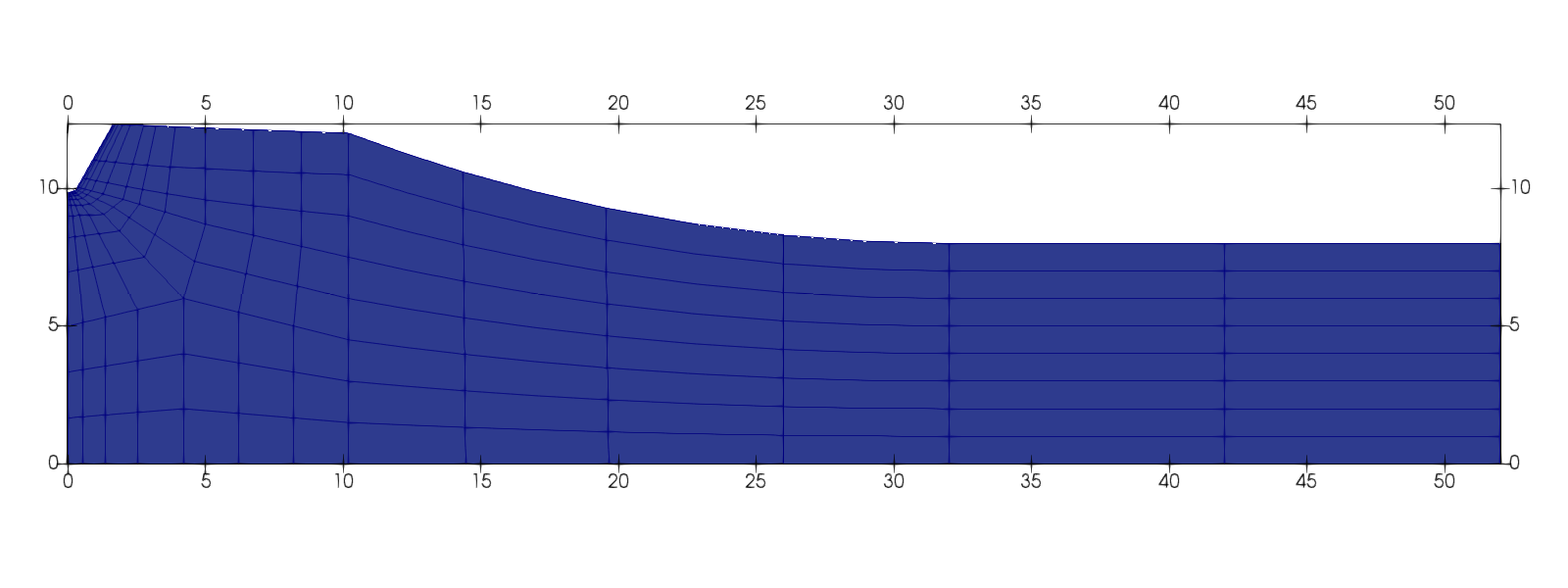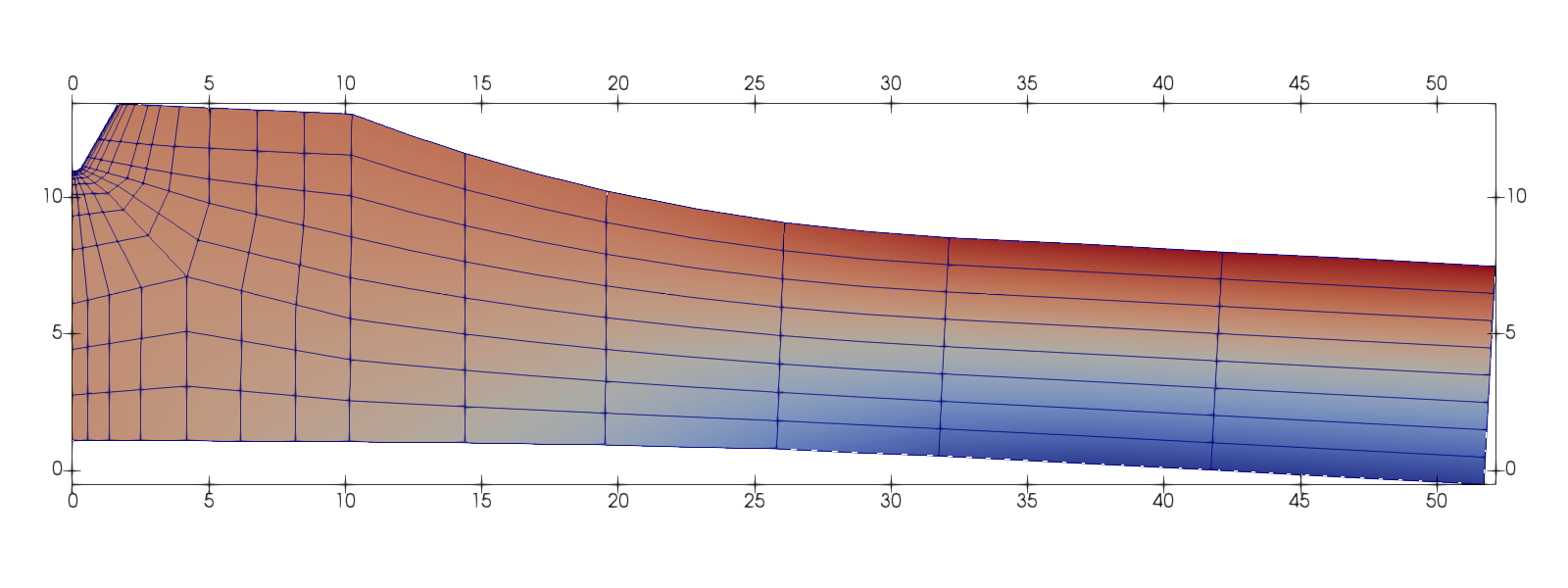[★★★☆☆] Notched Beam Under Cyclic Loading
The model scripts can be downloaded from here.
This example is taken from section 1.1.7 in the manual "ABAQUS Example Problems Guide". Additional references are available:
Geometry
The model is depicted as follows.

Material Parameters
The Armstrong-Frederick model is used to model the behavior of the rolled steel. An elastic modulus of \(E=210~\mathrm{GPa}\) and a Poisson's ratio of \(\nu=0.3\) are used. The initial yield stress is \(\sigma_y=200~\mathrm{MPa}\).
Isotropic Hardening
The same exponential function with a saturated limit is used in both AF model and the ABAQUS implementation.
in which the following parameters are used: \(k_s=2000~\mathrm{MPa}\), \(m=0.26\) and \(k_l=0~\mathrm{MPa}\).
Kinematic Hardening
A slightly different rule is used in the ABAQUS implementation compared to that in the AF model. The linear part of the back stress \(\beta\) is proportional to the shifted stress \(\eta\), rather than its unit direction \(n=\dfrac{\eta}{|\eta|}\). Please refer to the description of the AF model for the meanings of those symbols.
In the ABAQUS implementation, the following rate form is used.
in which \(C=25.5~\mathrm{GPa}\) and \(\gamma=81\) are used.
The AF model uses the following form.
In this form, the parameter \(C\) shall be defined as a function. For simplicity, a constant but smaller value can be used for \(a<C\) while \(b=\gamma\).
Initial Condition
Initial accumulated plastic strain and back stress are defined so that
Numerical Model
The following commands can be used to define the model. Note since it is a plane strain problem, the corresponding wrapper is used. Also note due to the different implementation of kinematic hardening, exact result is not possible.
| Text Only | |
|---|---|
Results
The response of the root of the notch is plotted as follows.
The deformation is shown.
